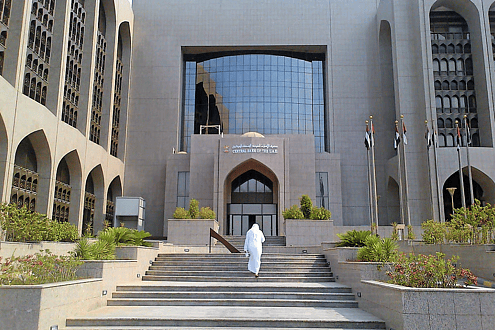With its carefully designed infrastructure, inclusive vision, and policy alignment, the soon to be launched Digital Dirham promises to usher in a new era of digital money — one that empowers users, strengthens trust, and secures the UAE’s leadership in the digital economy.
The Central Bank of the UAE (CBUAE) has published a landmark report detailing the significant progress made in the development of the Digital Dirham — its upcoming central bank digital currency (CBDC) — highlighting the project’s critical role in shaping the future of financial services, enabling inclusive access to digital money, and advancing the country’s leadership in financial innovation.
The Digital Dirham, which will be issued in both retail and wholesale formats, is a core component of the CBUAE’s multi-year Financial Infrastructure Transformation (FIT) programme, designed to modernise the UAE’s payment systems and monetary framework. The initiative supports the country’s ambition to future-proof its financial infrastructure and enhance its competitiveness in the global digital economy.
According to the CBUAE, the Digital Dirham will be a digital version of the UAE’s national currency, designed to complement — not replace — physical cash and existing bank deposits. It will serve as a secure and trusted medium of exchange, accessible to individuals, businesses, and government entities for a wide range of payment use cases including in-store purchases, e-commerce, peer-to-peer transfers, and cross-border settlements.
In January 2024, the CBUAE issued the first Digital Dirham as legal tender via its issuance platform. Sheikh Mansour bin Zayed Al Nahyan, Vice President and Deputy Prime Minister of the UAE and Chairman of the CBUAE, marked the occasion by executing the first cross-border transaction using the Digital Dirham on the mBridge platform — a collaborative initiative with the Bank for International Settlements Innovation Hub, the Bank of Thailand, the Hong Kong Monetary Authority, and the Digital Currency Institute of the People’s Bank of China.
This milestone was followed by a successful real-value retail pilot and the development of four digital economy use cases that demonstrated the Digital Dirham’s capabilities across multiple payment environments. These use cases confirmed its effectiveness in promoting financial inclusion, streamlining transactions, and enabling programmable payments through smart contracts.
The CBUAE’s newly released report outlines the design principles and policy frameworks that underpin the Digital Dirham’s development. The CBDC will operate on an intermediated two-tier distribution model, where the central bank issues the currency and licensed financial institutions distribute it to end users through digital wallets. This structure is intended to mitigate systemic risks while fostering private sector innovation.
The Digital Dirham will be non-interest bearing to encourage its use as a means of payment rather than a savings instrument and will be fully fungible with other forms of the Dirham, including cash and bank deposits. Its design prioritises offline usability, strong data privacy protections, interoperability across platforms, and support for advanced features such as smart contracts and real-time cross-border settlements.
Governor Khaled Mohamed Balama described the project as one of the CBUAE’s key strategic initiatives. “The Digital Dirham will help ensure a secure and efficient financial infrastructure for the UAE, enhance the efficiency of our payment ecosystem, support monetary stability, expand financial inclusion, and strengthen the international standing of the UAE Dirham,” he said. “We are committed to rigorous evaluation of its design and policy impacts as we prepare for full-scale implementation.”
The CBUAE has positioned the Digital Dirham as a tool to address evolving economic realities, especially in light of the increasing use of alternative digital assets and private money, which pose potential risks to central banks’ ability to implement monetary policy and maintain trust in sovereign currencies.
By offering a CBDC that is accessible, secure, and inclusive, the UAE aims to bridge financial access gaps, particularly for the unbanked and non-resident populations. Digital wallet integration will allow users to transact instantly with minimal cost, and programmable functionalities are expected to drive innovation in areas such as automated tax collection, supply chain financing, and targeted subsidies.
Monetary experts said the Digital Dirham is not just about keeping up; it is about leading the charge. “By blending cutting-edge technology with a commitment to inclusion and security, the UAE is crafting a financial future that is accessible to all, from street vendors to global corporations.
“ For the UAE residents, the Digital Dirham project promises a future where paying for coffee, sending money to a friend, or settling an international business deal is as easy as a tap on one’s phone — secure, instant, and cost-free,” they said.
The Digital Dirham project is also aligned with international best practices set by global institutions such as the IMF and BIS. The CBUAE’s collaborative approach with domestic financial institutions and global technology partners has been central to ensuring operational readiness and robust security architecture. The introduction of wallet-based access, layered cybersecurity protocols, and real-time fraud monitoring will be critical components of the rollout.
The project’s implications extend beyond domestic applications. With cross-border features embedded from the outset, the Digital Dirham is poised to play a significant role in global CBDC interoperability, particularly with trade and remittance corridors in Asia, Africa, and Europe. This could reduce friction in international transactions and support the UAE’s ambition to become a regional financial hub for digital currencies and fintech innovation.
The full launch of the Digital Dirham will take place in phases, starting with expanded retail pilot testing, followed by integration with banking apps and merchant payment platforms. The CBUAE has also developed a dedicated Digital Dirham issuance platform and wallet system to support deployment and scalability.
As central banks worldwide increasingly explore digital currencies, the UAE’s proactive stance positions it at the forefront of CBDC implementation. According to the Atlantic Council’s CBDC Tracker, over 130 countries, representing 98 per cent of global GDP, are now exploring digital currencies, with more than 25 pilot programmes in operation.

